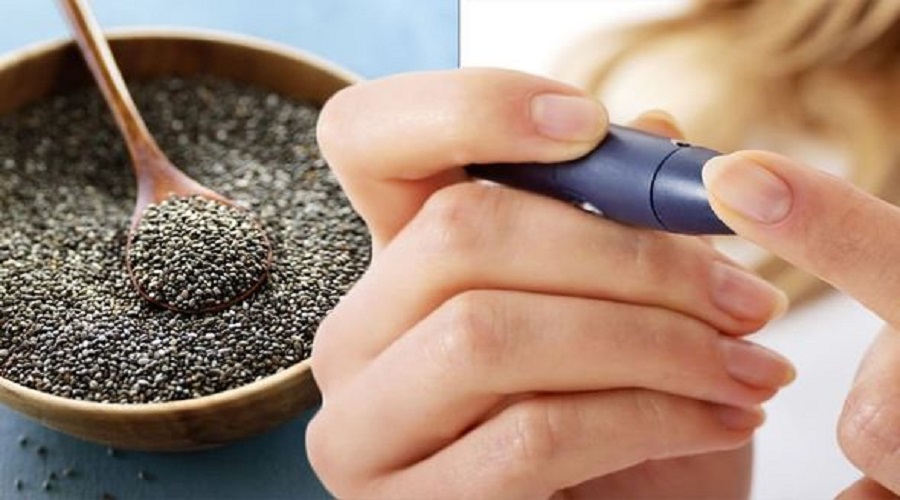
Since ancient times, chia seeds, which are exceptionally rich in nutrients, have been appreciated for their positive effects on health. Chia seeds are rich in antioxidants and have a tonne of fibre, minerals, and fatty acids such as omega-3, all of which assist heart health, bone strength, and blood sugar regulation.
Chia seeds are tiny black/white seeds believed to have originated in Central America and are part of the Salvia hispanica L. plant. The Aztec and Mayan cultures often included these incredibly healthy seeds in their diets. Evidence also points to the usage of this well-known food in cosmetics, religious rituals, and possibly even medicine. People still ingest chia seeds today all throughout the world.
Many health professionals support Chia seeds for their great nutritional worth, earning them the moniker “superfood” as well. The following critical elements are really present in 1 ounce (28 grammes or 2 teaspoons) of chia seeds, including
Chia seeds’ glycemic index and load
Based on how quickly food raises blood sugar levels, the Glycemic index (GI) assigns a numerical number to the food. According to the system, foods are ranked from 0 to 100, with 100 getting pure glucose (sugar). A meal with a lower GI often has more fibre and will cause blood sugar levels to rise more gradually after consumption. A meal’s GI rating indicates how thoroughly processed it is and how fast it will cause blood sugar levels to rise.
Diabetes sufferers should be aware of both the glycemic index (GI) and glycemic load to prevent a sharp increase in blood sugar.
Chia seeds make an excellent diabetic diet option because of their low glycemic index. Chia seeds are considered one of the “low-GI foods” despite having a high glucose content; they have a GI of only 4. Because low-GI carbs are slowly broken down and absorbed, blood sugar levels are kept steady.
Fiber found in Chia seeds for the best diabetic diet plan for health in India
Soluble fibre and mucilage, which give moistened chia seeds their sticky texture, make up the majority of the fibre in chia seeds. In addition to slowing down digestion and lowering LDL cholesterol, these fibres may also aid in increasing feelings of fullness and reduce blood sugar increases following meals.
Fiber’s Advantages for Managing Diabetes suggested by the best nutritionist in India
Including foods high in fibre in one’s diet can help control diabetes and lessen its symptoms. Getting enough fibre can help persons with diabetes:
Consistent Blood Sugar
Increased fibre consumption has been repeatedly linked to better blood glucose management in type 2 diabetics. The fibre cannot be absorbed or broken down by the human body. Because of this, unlike other carbs, fibre does not result in an increase in blood sugar.
Encourage Weight Loss
Foods high in fibre stay in the gut longer and produce prolonged sensations of fullness because fibre is sluggish to pass through the stomach and cannot be digested. Foods that are abundant in fibre also frequently have low-calorie counts.
Consuming low-calorie forms of fibre may make you feel fuller, which helps you establish a calorie deficit that promotes weight loss.
Research indicates that while being overweight is an established risk variable for type 2 diabetes, losing weight can help people with the disease manage their insulin levels and, in certain situations, even reverse their diabetes.
Keep Heart Disease at Bay
Heart disease is highly likely to strike someone with diabetes. Diabetes-related elevated blood glucose levels have the potential to harm blood vessels as well as the nerves that regulate blood flow and the heart. Over time, heart disease may result from this damage’s narrowing of the blood arteries supplying the heart.
According to research, consuming enough soluble fibre lowers LDL cholesterol, which in turn lowers the possibility of heart disease. In order to stop particles of cholesterol from entering the bloodstream, soluble fibre binds to them in the small intestine.
The best diabetes diet plan clinic suggests, how to consume chia seeds?
Before, chia seeds were thought to be a specialty item available exclusively in certain health stores. They are now widely recognized as superfoods, readily accessible, and utilised in practically everything, including drinks, energy bars, and cereals. Salvia Hispanica is the name of the blooming plant that produces chia seeds. It is a member of the mint family. High-quality seeds have a natural coloration of either black or white.
According to DK Publishing’s book Healing Foods, soaked seeds can be sprinkled over a salad or added to recipes for yogurt, cereal, and muffins. You can make a hearty salad using chia sprouts or utilize them in the same way. Consider using them as a natural thickener in stews or soups. Additionally, these seeds enhance the taste and nutritional value of baked products like bread, muffins, and homemade crackers.
You can consume chia seeds whole or ground into a powder. Blended intact chia seeds could be used in soups, drinks, and smoothies. The powder-like texture is preferred by some because it blends well with whole wheat flour. Chia seeds retain their nutritious value regardless of the form they are consumed in. To reap the health advantages of chia seeds, it is recommended to consume 1-2 teaspoons of the seed (whole or ground). To make chapattis and chilla, ground chia seeds could be used with besan or whole wheat flour. After soaking, you can add whole chia seeds to your yogurt, smoothies, cold soups, and detox water.

Hello My Name is Dt. Ruksana Azhar and I am a certified dietician and providing online & offline services for Weight Management, PCOS/PCOD Management, Diabetes Management , etc. I have 12+ years of experience in the Apollo Hospital Delhi , Max Super Specialty Hospital Delhi, Lilavati Hospital Mumbai and VLCC healthcare Mumbai. I loves to write healthcare and lifestyle related blog. My favorite part of being a doctor is the opportunity to directly improve the health and wellbeing of my patients and to develop professional and personal relationships with them.



